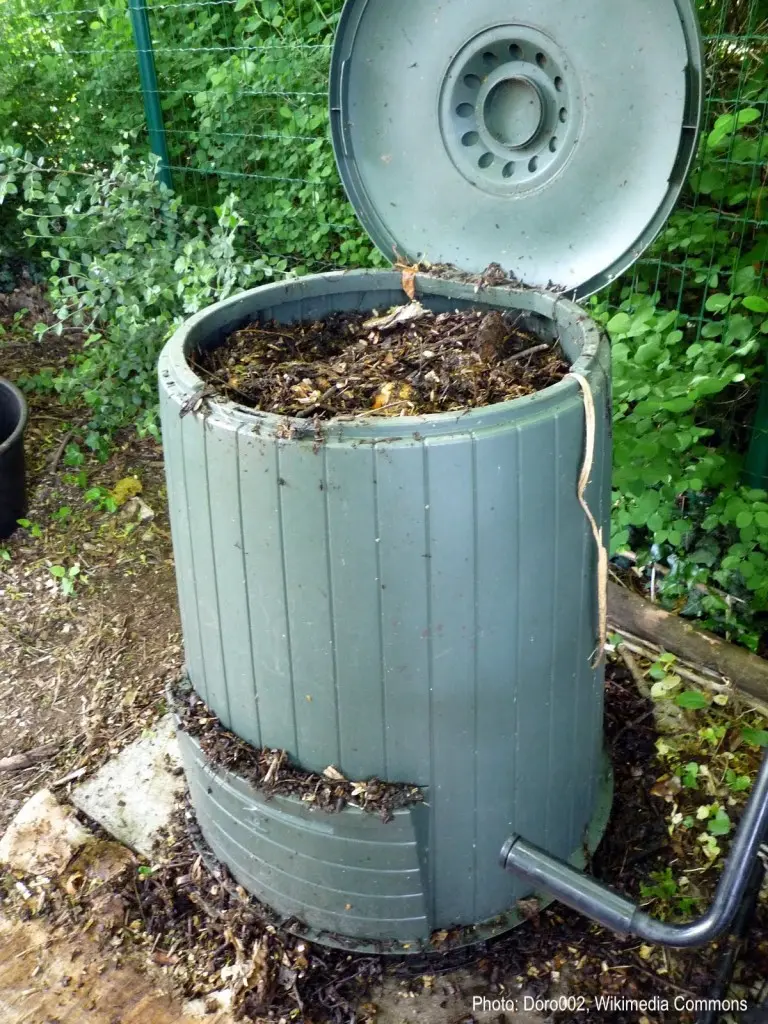Compost — The Natural Sponge of the Soil
Compost transforms the soil into something like a sponge. Just as a kitchen sponge absorbs soap and water, compost in the soil binds with nutrients and moisture, creating a rich and balanced growing environment. When mixed properly, compost forms a natural bond with soil particles, helping to retain fertilizers and nutrients efficiently. This improves soil structure, making it softer and more friable — allowing plant roots to spread easily and breathe better.
Making Compost at Home
You can create a compost pit in your backyard using organic household waste such as fruit peels, vegetable scraps, tea leaves, and dry leaves. This homemade compost can significantly reduce household waste and improve your soil’s fertility naturally.
Buying Compost — What to Check
If you purchase compost from the market, make sure to check the following:
- It should be of good quality and well-matured (fully decomposed).
- Its pH value should be tested and clearly mentioned on the label.
- Never use immature or half-decomposed compost — it can harm plants by tying up nitrogen and producing toxic compounds during further decomposition.
- Avoid contaminated compost that may contain pathogens or harmful substances.

Preparing the Soil Before Adding Compost
If your budget allows, you can prepare your soil a week before applying compost by spraying copper oxychloride or mixing 1 kg of elemental sulfur per kanal/acre. This helps reduce fungal infections in soils with a history of fungal problems.
When sulfur is added to the soil, beneficial bacteria oxidize it into sulfate, a form plants can absorb. This oxidation process takes about 3–4 weeks and works like digestion — microbes convert sulfur into a useful nutrient, just as animals convert feed into energy.
The Role of Beneficial Microbes in Compost
Compost naturally contains beneficial bacteria and fungi that help suppress harmful soil-borne pathogens. These microorganisms also help balance soil pH and improve nutrient availability.
In clay or heavy soils, reduce irrigation slightly after compost application, since compost improves the soil’s ability to hold water.
Compost also supports the growth of nitrogen- and sulfur-fixing bacteria, similar to the microbial formulations found in branded biofertilizers such as Neutrophil Urea by Jaffer Agro or other bio-enhanced fertilizers.
The Long-Term Benefits of Organic Soil
Remember, the food for beneficial microbes is organic matter. To build a truly fertile soil, farmers should focus on increasing the organic content of their fields. Organic farming works gradually — your soil won’t become fully organic overnight. It typically takes 1 to 3 years of consistent effort, but the long-term rewards are worth it:
- Reduced fertilizer costs
- Improved soil health
- Enhanced plant growth
- Sustainable productivity for years to come
کمپوسٹ — مٹی کا قدرتی اسپونج
کمپوسٹ مٹی کو ایک اسپونج کی طرح بنا دیتی ہے۔ جیسے باورچی خانے کا اسپونج صابن اور پانی کو جذب کر لیتا ہے، بالکل ویسے ہی کمپوسٹ جب مٹی میں ڈالی جاتی ہے تو یہ مٹی کے اجزاء کے ساتھ مل کر ایک مضبوط بندھن بناتی ہے۔ اس بندھن میں کھادوں کے تمام غذائی اجزاء محفوظ ہو جاتے ہیں۔ اس سے مٹی نرم، زرخیز اور ہوا دار ہو جاتی ہے، جس سے پودوں کی جڑیں آسانی سے پھیلتی ہیں اور بہتر بڑھوتری پاتی ہیں۔
گھریلو کمپوسٹ کیسے بنائیں
آپ اپنے گھر کے باہر یا باغیچے میں ایک کمپوسٹ گڑھا بنا سکتے ہیں۔اس میں گھریلو نامیاتی فضلہ (آرگینک ویسٹ) جیسے سبزیوں کے چھلکے، پھلوں کے بچے ہوئے حصے، چائے کی پتی، اور خشک پتے شامل کریں۔کچھ ماہ میں یہ تمام مواد گل سڑ کر قدرتی کمپوسٹ میں تبدیل ہو جائے گا جو مٹی کے لیے بہترین خوراک ہے۔
مارکیٹ سے کمپوسٹ خریدتے وقت احتیاط
اگر آپ مارکیٹ سے کمپوسٹ خریدنا چاہتے ہیں تو درج ذیل باتوں کا خیال رکھیں:کمپوسٹ اعلیٰ معیار کی ہو۔اس کا pH ٹیسٹ ہوا ہو اور پیک پر واضح طور پر لکھا ہو۔ادھ پکی (نامکمل یا کچی) کمپوسٹ ہرگز استعمال نہ کریں، کیونکہ یہ پودوں کے لیے نقصان دہ ثابت ہو سکتی ہے۔ آلودہ یا جراثیم زدہ کمپوسٹ استعمال نہ کریں۔
کمپوسٹ ڈالنے سے پہلے مٹی کی تیاری
اگر آپ برداشت کر سکتے ہیں تو کمپوسٹ ڈالنے سے ایک ہفتہ پہلے کاپر آکسی کلورائیڈ کا اسپرے کرلیں یا ایک کلو سلفر فی کنال مٹی میں شامل کریں۔اس سے مٹی میں موجود فنگس (پھپھوندی) ختم ہو جاتی ہے، خاص طور پر ان زمینوں میں جن میں کئی سالوں سے فنگس کا حملہ ہوتا رہا ہو۔جب سلفر زمین میں ڈالی جاتی ہے تو اس میں موجود بیکٹیریا سلفر کو سلفیٹ میں تبدیل کر دیتے ہیں، جو پودوں کے لیے مفید غذائی جزو ہے۔ یہ عمل تقریباً 3 سے 4 ہفتے میں مکمل ہوتا ہے۔
کمپوسٹ میں موجود فائدہ مند بیکٹیریا
کمپوسٹ میں ایسے فائدہ مند بیکٹیریا اور فنگس موجود ہوتے ہیں جو مٹی میں موجود نقصان دہ جراثیم کو ختم کرتے ہیں۔یہ بیکٹیریا مٹی کا pH متوازن کرتے ہیں اور غذائی اجزاء کو پودوں کے لیے قابلِ استعمال بناتے ہیں۔اگر آپ کی زمین چکنی یا بھاری مٹی والی ہے تو کمپوسٹ ڈالنے کے بعد پانی کم مقدار میں دیں، کیونکہ کمپوسٹ پانی کو زیادہ دیر تک جذب کر کے رکھتی ہے۔کمپوسٹ میں نائٹروجن اور سلفر بنانے والے بیکٹیریا بھی ہوتے ہیں، بالکل ویسے ہی جیسے کچھ زرعی کمپنیوں کے بائیو فرٹیلائزرز (مثلاً جعفر کمپنی کی نیوٹرافل یوریا) میں لکھا ہوتا ہے کہ “ایک کلو میں پچاس ہزار بیکٹیریا موجود ہیں۔”
نامیاتی مٹی کے دیرپا فائدے
کسان بھائی یاد رکھیں کہ بیکٹیریا کی خوراک آرگینک میٹر (نامیاتی مواد) ہوتا ہے۔اپنی زمینوں کو نامیاتی بنائیں تاکہ کھادوں کا اثر بہتر ہو۔یاد رکھیں، زمین ایک دن میں آرگینک نہیں بنتی — اس کے لیے ایک سے تین سال تک مسلسل محنت درکار ہوتی ہے۔لیکن جب زمین مکمل طور پر آرگینک ہو جاتی ہے تو:کھادوں کا خرچ کم ہو جاتا ہےمٹی کی صحت بہتر ہوتی ہےپیداوار میں اضافہ ہوتا ہےزمین طویل عرصے تک زرخیز رہتی ہے
کیا